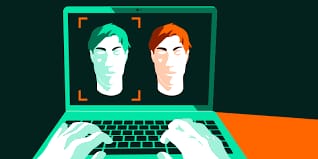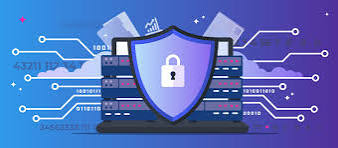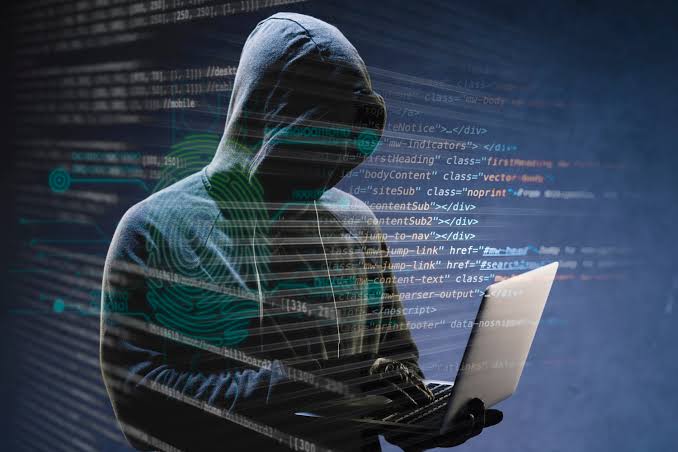
Deepfake frauds and identity manipulation
Deepfake frauds and identity manipulation exploit AI to create realistic yet fake content, threatening individuals, businesses, and society. They facilitate scams, misinformation, and cybercrime while challenging traditional security measures. Detection technologies, legal frameworks, and ethical practices are emerging to counter these threats.
✨ Raghav Jain

Introduction
In today’s digital era, technology is evolving at a pace that can be both exciting and alarming. One of the most disruptive developments is deepfake technology—the creation of highly realistic but artificial images, videos, or audio of individuals. While deepfakes can be used creatively in entertainment and art, they are increasingly being exploited for fraud, identity theft, and misinformation.
Deepfake frauds and identity manipulation have become major cybersecurity and societal concerns. Criminals can impersonate public figures, manipulate videos of individuals for extortion, or trick people into sharing sensitive information. Understanding this threat, how it works, and how to protect yourself is crucial in a world where seeing is no longer believing.
This article will explore the science behind deepfakes, the risks they pose, real-world examples, and practical strategies to safeguard personal and digital identity. In recent years, the rise of deepfake technology has introduced a complex challenge in the realm of digital communication and cybersecurity. Deepfakes are synthetic media in which artificial intelligence techniques are used to manipulate or generate images, audio, and videos that convincingly imitate real people. This technology, while initially developed for entertainment, art, and media purposes, has increasingly been exploited for fraudulent activities and identity manipulation. The sophistication of deepfakes makes it difficult for the average person to distinguish between authentic and fabricated content, which opens the door for various forms of deception, from political disinformation to personal scams.
Deepfake frauds typically involve the use of artificial intelligence algorithms, such as deep learning and generative adversarial networks (GANs), to create highly realistic videos or audio recordings. These AI systems learn from vast amounts of existing data to replicate the appearance, voice, and mannerisms of an individual. For instance, a deepfake video might show a public figure making statements they never actually made, or a manipulated audio clip might replicate someone’s voice to authorize transactions or convey false information. The ability to replicate human characteristics with such precision makes deepfakes an attractive tool for criminals aiming to manipulate perception, extract money, or spread misinformation.
One of the most concerning aspects of deepfake frauds is their application in financial scams and identity theft. Cybercriminals have increasingly used deepfake audio and video to impersonate company executives, often in the context of business email compromise or CEO fraud. In these cases, fraudsters generate a deepfake voice that closely mimics a high-ranking official’s tone and speech pattern, instructing employees to transfer funds or reveal sensitive financial information. Victims, believing the request is legitimate, often comply, leading to significant monetary losses. Similarly, deepfake technology has been used to forge video identity proofs or authentication records, allowing fraudsters to bypass security systems and gain unauthorized access to bank accounts, online platforms, or secure networks.
Another alarming dimension of deepfake technology is its impact on personal privacy and reputation. Individuals, especially women, have been targeted with non-consensual deepfake pornography or manipulated videos, where their likeness is inserted into explicit content. These malicious acts are designed to harass, shame, or intimidate, creating psychological trauma for the victims. Beyond personal attacks, deepfakes are also increasingly utilized in social media campaigns to manipulate public opinion. By presenting fabricated events, fake endorsements, or staged incidents, malicious actors can influence political discourse, disrupt elections, and spread disinformation at scale. The realism of deepfakes often leads audiences to accept them as credible, undermining trust in digital media and news sources.
Detecting deepfake content is inherently challenging due to the continuous advancement of AI technologies. Early deepfakes often contained visual inconsistencies, unnatural movements, or audio distortions, which could be identified with careful observation. However, newer deepfakes have become far more sophisticated, often passing human scrutiny and automated detection tools. This constant evolution means that legal, social, and technological frameworks are struggling to keep pace. While some detection techniques rely on analyzing digital fingerprints, inconsistencies in blinking patterns, or subtle facial movements, the arms race between deepfake creation and detection continues to escalate, leaving room for exploitation.
The legal implications of deepfake frauds and identity manipulation are equally complex. In many jurisdictions, existing laws around defamation, harassment, and fraud can apply to cases involving deepfakes, but the technology often outpaces legislation. Lawmakers are now grappling with questions of liability, consent, and accountability. For instance, if a deepfake is used to manipulate a corporate transaction, should the creator of the deepfake or the distributor be held responsible? Similarly, when deepfakes are used in the political arena, how can governments regulate digital content without infringing on freedom of expression? These challenges highlight the urgent need for updated policies, international cooperation, and stringent cybersecurity measures to mitigate the risks associated with deepfake technology.
Preventing and combating deepfake frauds requires a multi-layered approach. Technological solutions, such as AI-powered detection tools, watermarking, and authentication systems, can help verify the authenticity of digital content. Awareness campaigns and digital literacy programs are equally important, educating the public and organizations on how to critically evaluate media, recognize potential scams, and protect personal information online. Furthermore, corporate protocols must be strengthened to prevent fraud, including multi-factor verification, secure communication channels, and employee training on recognizing suspicious requests. By combining technology, education, and policy, society can build resilience against the malicious use of deepfakes.
Despite the risks, it is important to recognize that deepfake technology itself is neutral—it is the intent behind its use that determines its ethical and legal consequences. On the positive side, deepfakes have applications in entertainment, education, and accessibility. For instance, they can bring historical figures to life in documentaries, provide realistic training simulations, or create personalized educational content. The challenge lies in balancing innovation with responsible use and ensuring that safeguards are in place to prevent exploitation.
In conclusion, deepfake frauds and identity manipulation represent a significant and growing threat in the digital age. The ability to fabricate highly convincing audio and video content has far-reaching implications for personal privacy, corporate security, political stability, and public trust. As AI technologies advance, the line between reality and fabrication becomes increasingly blurred, making detection and prevention more challenging. Addressing these issues requires coordinated efforts across technological, legal, and educational domains, fostering awareness, robust cybersecurity practices, and updated legal frameworks. Only by proactively confronting the dangers of deepfake technology can society mitigate its misuse while still harnessing its potential for positive innovation. Vigilance, critical thinking, and collaboration will be key to navigating this evolving landscape of digital deception.
What are Deepfakes?
Deepfakes are synthetic media generated using artificial intelligence (AI) and deep learning techniques. They can convincingly replace someone’s face, mimic voices, or fabricate realistic actions in videos.
Key characteristics of deepfakes:
- Highly realistic visual or audio replication
- Ability to mimic behavior, speech, and expressions
- Often indistinguishable from genuine media to the untrained eye
Deepfakes are created using two main AI techniques:
- Generative Adversarial Networks (GANs): AI models generate realistic images by learning from large datasets of photos and videos.
- Autoencoders: These compress and reconstruct images or videos, enabling face swaps or voice mimicry.
While initially used for harmless entertainment or movie effects, the accessibility of deepfake software has made identity fraud much easier.
How Deepfakes Are Used for Fraud and Identity Manipulation
1. Financial Scams
Criminals use deepfake audio or video to impersonate executives, requesting fund transfers or confidential data. Banks and companies have fallen victim to fake CEO calls or instructions, sometimes costing millions.
2. Social Engineering Attacks
By creating realistic videos or voice messages, attackers can manipulate employees, friends, or family into divulging sensitive information.
3. Identity Theft
Deepfakes can be used to produce fake IDs, passports, or driver’s licenses. Scammers may exploit this for financial fraud, fake profiles, or illegal activities.
4. Political Manipulation and Misinformation
Fake videos of politicians or public figures can spread false statements or controversial actions, influencing elections and public opinion.
5. Cyberbullying and Extortion
Some individuals are targeted with fake adult content or manipulated videos to harass, blackmail, or defame them.
Why Deepfake Frauds Are Dangerous
- Hard to Detect: Modern deepfakes are so realistic that even experts struggle to differentiate them from real footage.
- Rapid Spread: Fake videos can go viral in minutes via social media and messaging platforms.
- Psychological Impact: Victims may experience stress, humiliation, or reputational damage.
- Financial Loss: Fraudulent transactions or scams using deepfakes can result in huge monetary losses.
- Erosion of Trust: The line between real and fake blurs, affecting media credibility and personal trust.
The Science Behind Detection
Researchers are developing tools to identify deepfakes using AI, forensic techniques, and behavioral analysis. Common detection methods include:
- Digital Forensics: Examining metadata, pixel inconsistencies, and compression artifacts.
- AI Detection Models: Neural networks trained to spot subtle facial movements or unnatural patterns.
- Voice Analysis: Checking pitch, cadence, and background noise for inconsistencies in audio deepfakes.
- Human Observation: Some signs like unnatural blinking, slight facial distortions, or mismatched lip-sync can indicate manipulation.
Despite these methods, detection is an ongoing challenge because deepfake technology evolves constantly.
Practical Tips to Protect Yourself
1. Verify Communications
- If you receive unexpected video or voice requests for sensitive data or money, verify through a separate channel.
- Always confirm with the person directly, using a known phone number or email.
2. Secure Personal Data
- Avoid sharing high-resolution images, videos, or voice recordings publicly.
- Enable strong privacy settings on social media to reduce the risk of material being used for deepfakes.
3. Use Multi-Factor Authentication (MFA)
- Even if a deepfake is used to manipulate you, MFA adds an extra layer of security to prevent unauthorized access.
4. Educate and Train
- Businesses should train employees on identifying social engineering attempts and deepfake-based fraud.
- Awareness campaigns can reduce victimization in communities.
5. Check Content Sources
- Avoid sharing videos from unverified sources.
- Fact-check content using reliable platforms before believing or forwarding.
6. Legal Recourse
- Report deepfake-based harassment or fraud to authorities.
- Some countries have emerging laws targeting malicious deepfake use.
Daily Practices to Stay Safe Online
Morning:
- Review emails and messages for unusual requests.
- Avoid clicking links from unknown sources.
Midday:
- Verify any suspicious social media posts or messages before interacting.
- Use updated antivirus and security software.
Evening:
- Check your privacy settings on social apps.
- Educate yourself on latest cyber threats and deepfake examples.
Weekly:
- Update passwords and enable two-factor authentication.
- Run a security audit of personal devices.
- Limit sharing of sensitive images or videos publicly.
Common Myths About Deepfakes: Busted!
“Deepfakes are only used for entertainment.”
→ False. While movies and social media use them creatively, criminals exploit them for fraud, harassment, and misinformation.
“I can spot a deepfake easily.”
→ Not true. Modern AI-generated deepfakes are highly realistic and often indistinguishable from real media.
“Only celebrities are targeted.”
→ Anyone with publicly available images or videos can be targeted. Everyday individuals are also at risk.
“Deepfakes are harmless fun.”
→ Not always. Misuse can cause financial loss, emotional trauma, and reputational damage.
“AI detection tools are foolproof.”
→ Nope. Detection is evolving alongside creation methods; staying vigilant is key.
Real-Life Examples of Deepfake Frauds
- A UK-based energy company lost over $200,000 when a deepfake voice impersonated the CEO requesting a wire transfer.
- Politicians’ fake videos spread misinformation during elections, causing public outrage.
- Victims of deepfake adult content faced blackmail and harassment online.
- Fraudsters used synthesized voices to impersonate family members, tricking people into transferring money.
These examples show the real-world impact of identity manipulation and reinforce the importance of awareness and protection.
Conclusion
Deepfake technology represents a double-edged sword—it offers creativity and innovation but also serious risks for fraud and identity manipulation. The threat affects individuals, businesses, and society at large. As deepfakes become increasingly sophisticated, awareness, vigilance, and proactive security measures are essential.
Protect yourself by verifying communications, securing personal data, using multi-factor authentication, educating yourself, and reporting any fraudulent activity. Being cautious online and staying informed about technological developments will help mitigate the risks of deepfake frauds.
Remember: Seeing is no longer believing. Critical thinking, careful verification, and smart security habits are the strongest defenses against identity manipulation in the digital age.
Stay alert. Verify before trusting. Protect your identity.
Q&A Section
Q1:- What are deepfakes and how are they created?
Ans :- Deepfakes are synthetic media where AI manipulates images, audio, or videos to make them appear real. They are created using machine learning techniques like GANs (Generative Adversarial Networks) to replicate someone’s appearance, voice, or mannerisms convincingly.
Q2:- How do deepfake frauds impact individuals?
Ans :- Individuals can suffer from identity theft, reputational damage, cyberbullying, and financial loss when their likeness is misused for scams, fake pornography, or impersonation.
Q3:- How do deepfakes affect businesses and organizations?
Ans :- Companies can face brand damage, misinformation, financial fraud, or corporate espionage if deepfakes are used to impersonate executives or manipulate communications.
Q4:- What role does AI play in identity manipulation?
Ans :- AI enables sophisticated replication of personal traits, making it easier to create realistic fake content, forge documents, or bypass biometric security systems.
Q5:- How can deepfake technology be used for criminal activities?
Ans :- Criminals use deepfakes for phishing, financial scams, blackmail, spreading fake news, and social engineering attacks, exploiting trust in digital media.
Q6:- Are there legal measures against deepfake frauds?
Ans :- Some countries have introduced laws targeting identity theft, defamation, and non-consensual deepfake content. However, enforcement is challenging due to cross-border digital nature.
Q7:- How can individuals protect themselves from deepfake identity manipulation?
Ans :- Avoid sharing sensitive personal content online, verify unusual requests from acquaintances or organizations, use strong passwords, and remain skeptical of unsolicited media.
Q8:- What technologies help detect deepfakes?
Ans :- Detection tools use AI to analyze inconsistencies in facial movements, lighting, audio, or metadata. Blockchain-based verification and forensic analysis also aid in authenticity checks.
Q9:- Can deepfakes be used positively?
Ans :- Yes, they can aid in entertainment, education, film production, virtual avatars, and accessibility, but ethical guidelines must ensure consent and prevent misuse.
Q10:- How is society adapting to the rise of deepfake frauds?
Ans :- Awareness campaigns, legal frameworks, detection tools, AI ethics research, and media literacy programs help individuals and organizations reduce risks and handle manipulation.
Similar Articles
Find more relatable content in similar Articles

Blockchain security (DeFi, NFT..
Blockchain security is vital .. Read More

The Role of Robotics in Streng..
Robotics plays a vital role i.. Read More

5G network security concerns..
5G technology promises ultra-.. Read More

Rising Cyber Crimes: Latest T..
Cyber crimes are rapidly grow.. Read More
Explore Other Categories
Explore many different categories of articles ranging from Gadgets to Security
Smart Devices, Gear & Innovations
Discover in-depth reviews, hands-on experiences, and expert insights on the newest gadgets—from smartphones to smartwatches, headphones, wearables, and everything in between. Stay ahead with the latest in tech gear
Apps That Power Your World
Explore essential mobile and desktop applications across all platforms. From productivity boosters to creative tools, we cover updates, recommendations, and how-tos to make your digital life easier and more efficient.
Tomorrow's Technology, Today's Insights
Dive into the world of emerging technologies, AI breakthroughs, space tech, robotics, and innovations shaping the future. Stay informed on what's next in the evolution of science and technology.
Protecting You in a Digital Age
Learn how to secure your data, protect your privacy, and understand the latest in online threats. We break down complex cybersecurity topics into practical advice for everyday users and professionals alike.
© 2025 Copyrights by rTechnology. All Rights Reserved.